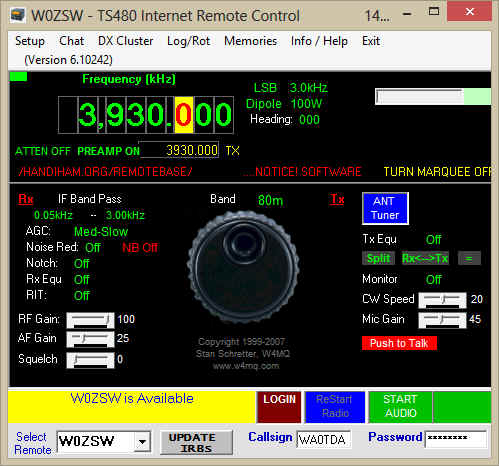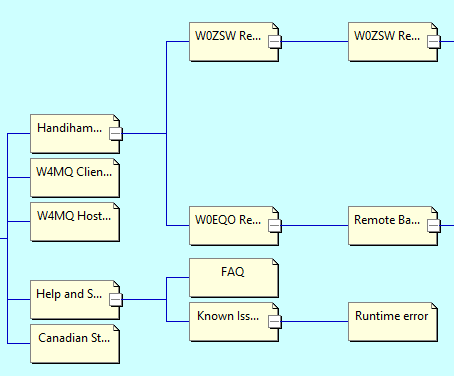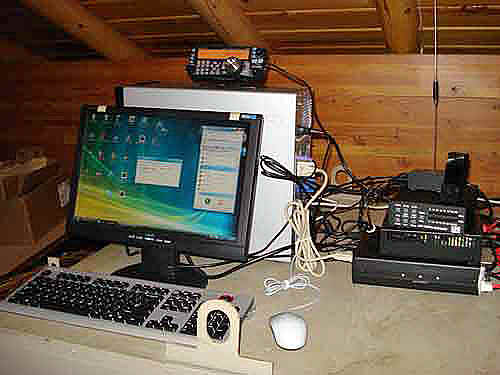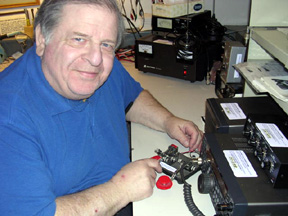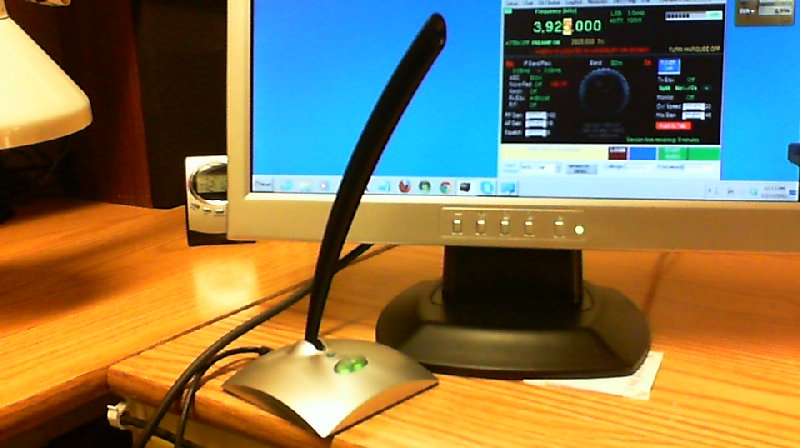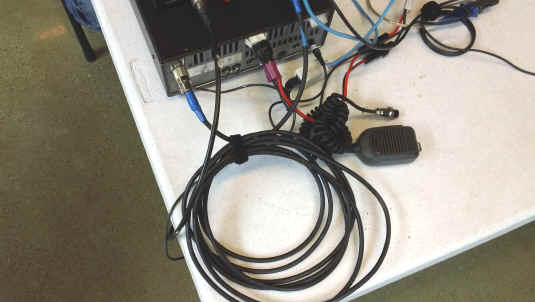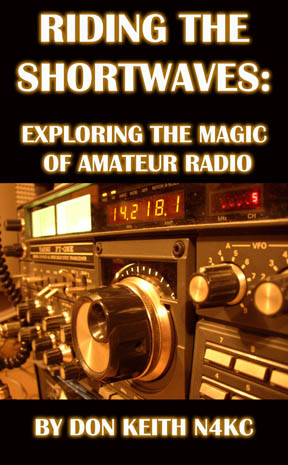Courage Center Handiham World Weekly E-Letter for the week of Wednesday, 27 February 2013
This is a free weekly news & information update from Courage Center Handiham System. Our contact information is at the end, or simply email handiham@couragecenter.org for changes in subscriptions or to comment. You can listen to this news online.MP3 audio stream:
http://www.handiham.org/audio/handiham.m3u
Download the 40 kbs MP3 audio to your portable player:
http://www.handiham.org/audio/handiham.mp3
Get this podcast in iTunes:

http://www.itunes.com/podcast?id=372422406
RSS feed for the audio podcast if you use other podcasting software:
http://feeds.feedburner.com/handiham
Welcome to Handiham World.
New release of 6.20200 remote base software brings back CW!
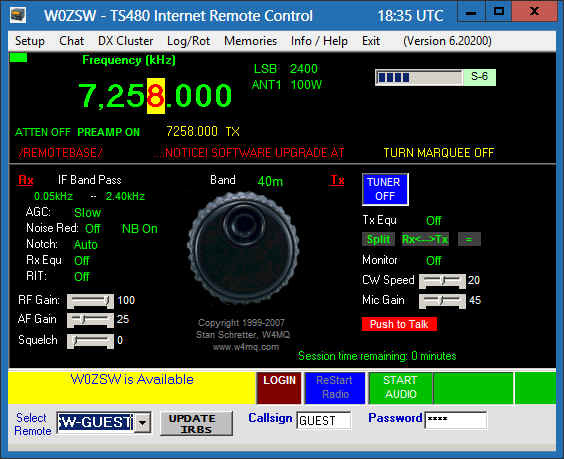
We lead off this week with a report on what is happening with the Internet Remote Base project. Thanks to Jose, KK4JZX, for the following report:
It’s here! 6.20200
Yes, folks, another update to the Web Transceiver client. Another milestone achieved! Want to have 200 watt support, well we have it and we want you to try it on W0ZSW. Much more robustness, well, we have it, thus you benefit! Welcome to the new and improved remote base client. One short month brings lots of fixes for version 6.2 of the client. Give it a try, and you will find that the new client boasts some nice improvements. You asked, we answered! Take advantage of a very new version of web transceiver with improved default browser support. Yes, you are reading correctly, we have implemented default browser support. For those of you who wanted the client to launch your default web browser, well you got it, try it now! How about CW support? Well, it was always there but we simply overlooked one coding error and finally fixed it for version 6.2. Our good friends can now continue using CW as the CW filters have been fixed.
Update as soon as possible to take advantage of the new and improved Web Transceiver. If you find something wrong, just e-mail us. We can tell you that your request won’t go into the bit bucket. The sooner you report issues, the sooner issues will be fixed. So, what are you waiting for? Get yourself to the new download page and get the latest version of web transceiver. Once you update, you will officially be at version 6.2.0.200 and you can begin taking advantage of some of the new and improved Remote Base client features.
We wish you the very best of luck, 73 : KK4JZX
Update as soon as possible to take advantage of the new and improved Web Transceiver. If you find something wrong, just e-mail us. We can tell you that your request won’t go into the bit bucket. The sooner you report issues, the sooner issues will be fixed. So, what are you waiting for? Get yourself to the new download page and get the latest version of web transceiver. Once you update, you will officially be at version 6.2.0.200 and you can begin taking advantage of some of the new and improved Remote Base client features.
We wish you the very best of luck, 73 : KK4JZX
The future of the W4MQ remote client is bright. We hope that, as we continue to enhance this client, we are able to provide value. Look for the following enhancements as we move forward: 1. Screen Reader Accessible versions of W4MQ
2. Support for new versions of Skype
3. Better support for hot keys within the client
4. and much much more!
Happy operating - From The Handiham Remote Base Client Team!
2. Support for new versions of Skype
3. Better support for hot keys within the client
4. and much much more!
Happy operating - From The Handiham Remote Base Client Team!
The Remote Base health report for today is a good one: W0EQO and W0ZSW are both on line and there is only one scheduled outage for mid-afternoon at W0ZSW, where the rig control computer will need to be rebooted for updates from Microsoft. Please join me in thanking our remote base team volunteers for their wonderful effort! Read more and download the new client at the remote base website:
http://handiham.org/remotebase/
Patrick Tice, WA0TDA
Handiham Manager
Correspondence:

Jose, KK4JZX, writes about the Thursday Tech Net:
I want to thank all those folks that joined us on the TechNet last night. It was truly amazing. We had a very interesting scenario in which there is a Plasma television. The issue was that every time the operator keys up, the TV freezes and has to be reset. There was an incredible amount of discussion surrounding this topic. We had other topics of course but it was truly amazing. Join us next week as we discuss many other Amateur Radio related technology topics.
73,
Jose – KK4JZX
Gord, VA3WXA, wrote WEATHER RADIO LISTENERS NEWSLETTER NET IRLP REFLECTOR CHANGE:
As has been mentioned in a past issue, Gord, VA3WXA has started a newsletter and a net on IRLP on Saturday evenings to go along with it. It was on IRLP reflector 9034 up until December 8th and since then it is now on IRLP reflector 9038. You can also connect to it via Echolink VE3ZHR-L 591897. The Weather Radio Listeners Newsletter Net meets on Saturday evenings at: 8:00 PM AT, 7:00 PM ET, 6:00 PM CT, 5:00 PM MT and at 4:00 PM PT. The main focus is on Weather Radio but we are also open to talking about SKYWARN and other related topics. We have recently started a roundtable section after taking check ins and any weather or Weather Radio related topic is fair game. The latest issue of the newsletter is now out and there is a lot of material that may be of interest to most people. The section devoted to SKYWARN and CANWARN is getting some interest from the National Weather Service and Environment Canada, with this issue discussing Superstorm Sandy and even an article on the North American Ice Storm of 1998.
If you aren't on the mailing list already and you would like to join, send an email to blindgordie@gmail.com.
Since the last article on this topic we have had 2 new recipients thanks to this weekly newsletter and hopefully there are more of you who are reading or listening to this that are interested.
Thanks & 73,
Gord, VA3WXA
Ken, K3FMK, found a bunch of ham radio related apps for Apple devices:
Hello! Here are just a few ham radio apps I found for the Apple iPod Touch, iPad Mini, iPad or iPhone:Editor's Note: Thanks for that list, Ken. There are some great ham radio apps out there!
Antenna Array
Antenna analyzer
CQ Roll Call Insight (Seems to be some sort of newspaper for ham radio operators.)
Echolink (For the iPod Touch and the iPhone.)
Elevation (Current elevation GPS and Map in meters or feet)
Frequency Counter
Ham (iPhone ham radio app)
Ham Dashboard (iPhone ham radio app) $2.99
Ham Radio Handbook (Good reference for ham radio!)
Ham Square (iPhone ham radio app)
Ham Tracker (iPhone ham radio app) $2.99
HamIAm (Good reference for ham radio!)
HRO (Ham Radio Outlet)
iPTT (Push To Talk)
iSDR (Receiver covering 7179.7 kHz to 7222.0 kHz)
Maidenhead (Latitude, Longitude and Maidenhead within 100 meters)
My Altitude (Coordinates (x2), Altitude, Metric and English, Barometric Pressure)
Q Codes
QST (Digital version ARRL magazine)
SICE Telecom
Air GHz! Advanced Radiolink Calculator
Skype
If memory serves me correctly, many were free from the App Store! When I checked with the App Store for "ham radio" apps, the total came to 199. But, I only managed to check out about 125. Although many were free, or $0.99 and a little higher, I did find one at $24.99. Can't remember the name, but I think it had something to do with repeaters. I hope this selection works reasonably well for you and when you check the App Store, you find more that will fit your needs!
73 de K3FMK, Ken
Handiham Nets are on on the air.
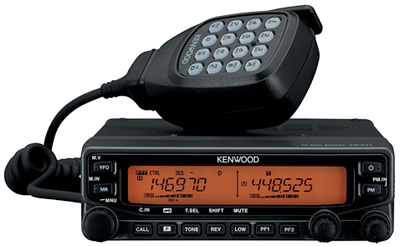
We are on the air daily at 11:00 USA Central Time, plus Wednesday & Thursday evenings at 19:00 USA Central Time.
The official and most current net news may be found at:
http://www.handiham.org/nets
http://www.handiham.org/nets
Daily sessions:
- Monday through Saturday 11:00 AM social net with designated net control station. Everyone is welcome to check in.
- Sunday morning 11:00 AM informal Roundtable with no net control station or designated topic. Check in with your friends and enjoy a Sunday morning chat!
Evening sessions:
- Wednesday evening Handiham Radio Club Social Net with a trivia question. This is a friendly, directed net with a net control station and the opportunity to answer a trivia question, if you wish.
- Thursday evening Handiham Radio Club TechNet, a directed net with a net control station for the purpose of discussing technical topics in amateur radio. If you have a question or a technical problem, check in and report it to the net. Perhaps you will find an answer in the ensuing discussion, or perhaps you will be able to answer someone else's question about a technical issue.
Welcome to the NX0P repeater, 146.685 with a tone of 100Hz, Echolink node number 513917. The NX0P machine is near Albert Lea in far southern Minnesota, near the busy intersection of US Interstate highways 90 and 35.
*HANDIHAM* conference server Node 494492 (Our preferred high-capacity node.)
*VAN-IRLP*, node 256919
KA0PQW-R, node 267582
KA0PQW-L, node 538131
N0BVE-R, node 89680
On the 220 MHz band: 223.94 negative offset, Arden Hills, MN Tone 100 Hz - KA0PQW (link)
Other ways to connect:
IRLP node 9008 (Vancouver BC reflector)
WIRES system number 1427
A dip in the pool

It's time to test our knowledge by taking a dip in the pool - the question pool, that is!
Let's go to the Extra Class pool and look at a question about logic:
E7A10 asks, What is a truth table?
Possible answers are:
A. A table of logic symbols that indicate the high logic states of an op-amp
B. A diagram showing logic states when the digital device’s output is true
C. A list of inputs and corresponding outputs for a digital device
D. A table of logic symbols that indicates the low logic states of an op-amp
Wikipedia tells us that "...A truth table is a mathematical table used in logic—specifically in connection with Boolean algebra, Boolean functions, and propositional calculus—to compute the functional values of logical expressions on each of their functional arguments, that is, on each combination of values taken by their logical variables..." and that "truth tables can be used to tell whether a propositional expression is true for all legitimate input values, that is, logically valid."
You may not be thinking "logic" when you think about studying electronics, but it is at the core of the subject these days, thanks to the common use of digital devices. Turning again to Wikipedia, we find that "Boolean algebra is the sub-area of algebra in which the values of the variables are the truth values true and false, usually denoted 1 and 0 (respectively)."
So what this means is that we can have electronic switches - lots of them - in different states of on or off and in millions of different combinations. Make a circuit out of these things and pretty soon you have yourself a nice amateur radio transceiver! So what IS a truth table? It's answer C, A list of inputs and corresponding outputs for a digital device. As we design a circuit, we look at a need presented by the circuit, then we choose a digital device that can satisfy that need. To do this, we use truth tables. The truth table allows us to figure out what happens in a solid state logic gate by showing us the options of what happens at the device's output when certain conditions are present at the input.
So it might go, "If two inputs are both positive (or "on" or "high" or whatever you want to designate the off/on state), then the output will be negative (or "off" or "low" or whatever you want to designate that on/off state.) But if only one input is high and the other is low, then what happens at the output of the solid state gate? That is what the truth table will tell you. It is what you will use to pick the gate you need to make your circuit do what you want under the conditions you call for.
You can find out more about Boolean logic and truth tables in your Extra Class study manual, and on Wikipedia. Now that's logical, Mr. Spock!
Please e-mail handiham@couragecenter.org to comment.
This week @ HQ
We had a report that the audio podcast was not titled for the past three weeks. I have been unable to identify why this is a problem as the metadata is included in the MP3 file and the podcast does show up on iTunes. However, this particular user was getting the podcast via Juice. If anyone can suggest a solution please contact us.The DAISY digest for our blind members is in production for March. Our thanks to Bob, N1BLF, Jim, KJ3P, and Ken, W9MJY, for reading this month. Watch for these DAISY materials in the members section on Friday.
Spring Break! The Handiham office will be closed March 8 through 12 for Spring Break. This office closing does not affect other Courage Center programs and services.
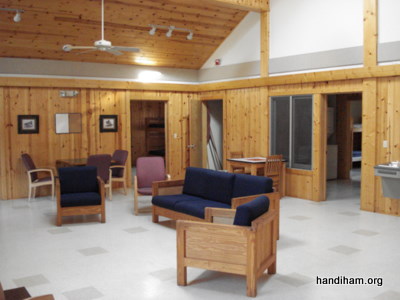 Photo: The great room in a typical wheelchair-accessible cabin at Radio Camp. Each cabin sports a complete kitchen for snacks and a laundry.
Photo: The great room in a typical wheelchair-accessible cabin at Radio Camp. Each cabin sports a complete kitchen for snacks and a laundry. Radio Camp application packets will be ready for mailing in late March. 2013 camp dates call for arrival on July 28 and departure on August 2. We have confirmed that we will offer our campers who pass Technician at camp brand-new handheld radios. Radio camp will emphasize ham radio fun and getting on the air.
We will feature:
- Technician beginner small group class - Get your first license and get on the air!
- General Class study group for those who need a quick review before taking the General exam.
- Extra Class study group for those who need a quick review before taking the Extra exam.
- VE session conducted by SARA, the Stillwater (MN) Amateur Radio Association, on Thursday, August 1, at 1:30 PM.
- Operating Skills small group get on the air sessions and discussions
- Extra Class seminar for those with Extra Class licenses who want to participate in more advanced technical projects and discussions
- Several stations to operate, including maritime mobile on the camp pontoon boat with Cap'n Bill, N0CIC
- Sailing with Skipper Bill, K9BV
- Handiham Radio Club meeting and elections
- Dining in the nearby newly-remodeled Woodland dining hall.
- Fun in the sun during Minnesota's excellent summer season - at Camp Courage on beautiful Cedar Lake!
Our scheduled Extra Class lecture this week will cover the next section as we continue the topic of digital logic, and it will be available on Friday afternoon if all goes well. All courses, Tech though Extra, are on line for your use whenever you want to study or review. Teaching is done with thoughtful attention to descriptions for those who are blind, and we promote understanding concepts rather than simply memorizing the question pool. If you would like to use this service but do not understand how, please contact us. We can also put the audio lectures on your DAISY digital NLS cartridge if you prefer that method instead of downloading or streaming audio from the website. Our latest audio lectures cover concepts in the Extra Class course. Please join us in whatever course you need, and also please let us know if you would like a specific topic covered in our Operating Skills lecture series.
Handiham net information and news: The official and most current net news may be found at:
http://www.handiham.org/nets
Digital mailers are important: If you do mail a digital cartridge to us, please be sure that it is an approved free matter mailer. Otherwise it will quickly cost us several dollars to package and mail out, which is more than the cost of the mailer in the first place. We don't have a stock of cartridges or mailers and not including a mailer will result in a long delay getting your request back out to you.
DAISY audio digests are available for our blind members who do not have computers, playable in your Library of Congress digital player. Handiham members who use these players and who would prefer to receive a copy of the monthly audio digests on the special Library of Congress digital cartridge should send a blank cartridge to us in a cartridge mailer (no envelopes, please), so that we can place the files on it and return it to you via free matter postal mail. Your callsign should be on both the cartridge and the mailer so that we can make sure we know who it's from. Blank cartridges and mailers are available from APH, the American Printing House for the Blind, Inc.
Digital Talking Book Cartridge Catalog Number: 1-02610-00, Price: $12.00
Digital Talking Book Cartridge Mailer Catalog Number: 1-02611-00, Price: $2.50
Order Toll-Free: (800) 223-1839.
The Library of Congress NLS has a list of vendors for the digital cartridges:
http://www.loc.gov/nls/cartridges/index.html
Get it all on line as an alternative: Visit the DAISY section on the Handiham website after logging in.
Stay in touch

Be sure to send Nancy your changes of address, phone number changes, or email address changes so that we can continue to stay in touch with you. You may either email Nancy at hamradio@couragecenter.org or call her at 763-520-0512. If you need to use the toll-free number, call 1-866-426-3442.
Handiham Manager Patrick Tice, WA0TDA, may be reached at handiham@couragecenter.org or by phone at 763-520-0511.
Mornings Monday through Thursday are the best time to contact us.
The Courage Handiham System depends on the support of people like you, who want to share the fun and friendship of ham radio with others. Please help us provide services to people with disabilities. We would really appreciate it if you would remember us in your estate plans. If you need a planning kit, please call. If you are wondering whether a gift of stock can be given to Handihams, the answer is yes! Please call Walt Seibert, KD0LPX, at 763-520-0532 or email him at walt.seibert@couragecenter.org.
Call 1-866-426-3442 toll-free. -- Help us get new hams on the air.
Get the Handiham E-Letter by email every Wednesday, and stay up-to-date with ham radio news.
You may listen in audio to the E-Letter at Handiham Weekly E-Letter in MP3 format
Email us to subscribe:
hamradio@couragecenter.org
That's it for this week. 73 from all of us at the Courage Handiham System!
Pat, WA0TDA
Manager, Courage Handiham System
Reach me by email at:
handiham@couragecenter.org
Nancy, Handiham Secretary:
hamradio@couragecenter.org
ARRL is the premier organization supporting amateur radio worldwide. Please contact Handihams for help joining the ARRL. We will be happy to help you fill out the paperwork!

The weekly e-letter is a compilation of software tips, operating information, and Handiham news. It is published on Wednesdays, and is available to everyone free of charge. Please email handiham@couragecenter.org for changes of address, unsubscribes, etc. Include your old email address and your new address.
